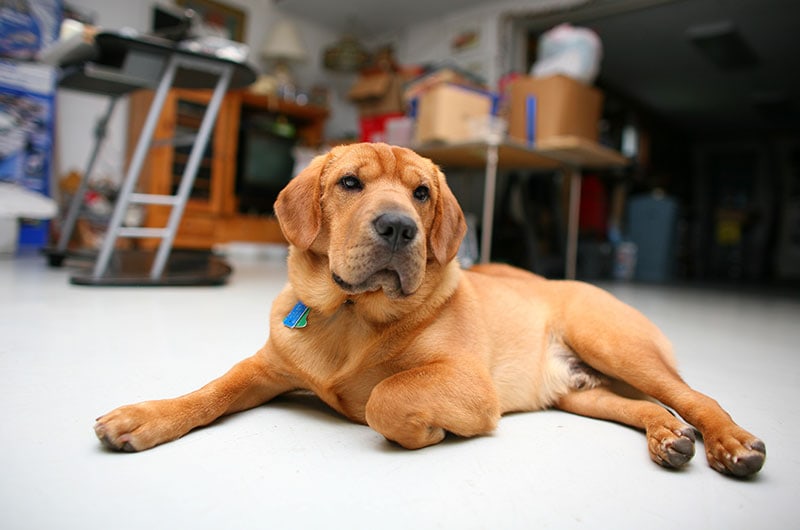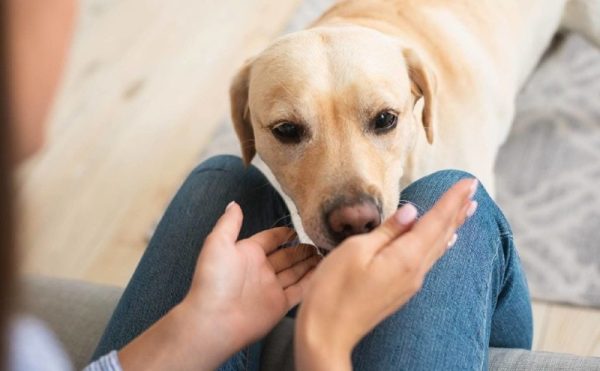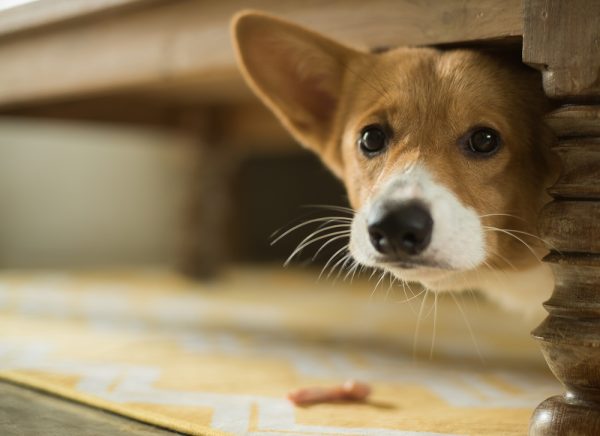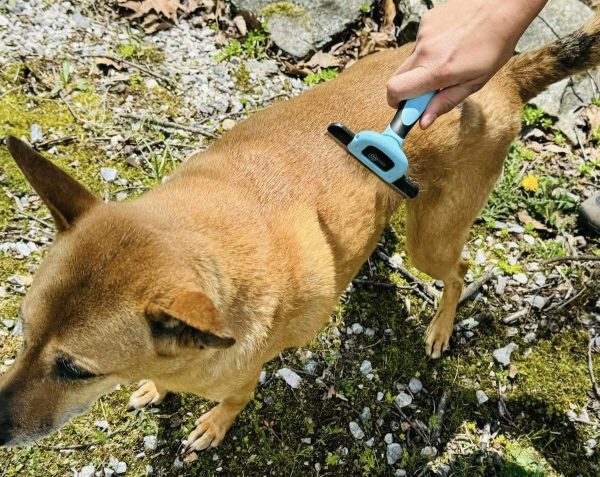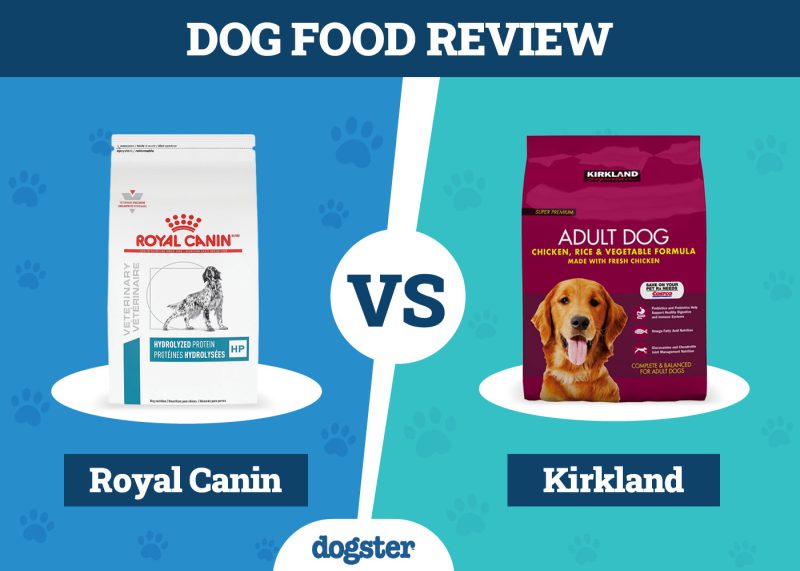The question often asked by dog owners is, “Can you leave a dog in the garage while at work?” The answer, quite simply, is yes, but with a few very important caveats.
The garage can indeed serve as a safe space for your four-legged friends while you are away, provided you take the necessary precautions to ensure their comfort and safety. We will go over those and more, so stick around to learn how you can provide optimal care and boarding for your furry pal.

Understanding the Basics
The idea of leaving your dog in the garage may seem unusual at first. It’s closed off from the house and doesn’t exactly bring “Home Sweet Home” to mind when you think about it. However, the garage does offer a few key benefits that are worth discussing.
More Room to Roam
One of the more obvious advantages is that a garage often provides more space for your pet to move around. For a dog accustomed to being in a cage or crate, a garage can serve as an expanded living space.
You can still place their familiar crate in the garage with the door left open, allowing your pet to roam as they please while still having their comfortable, familiar space.
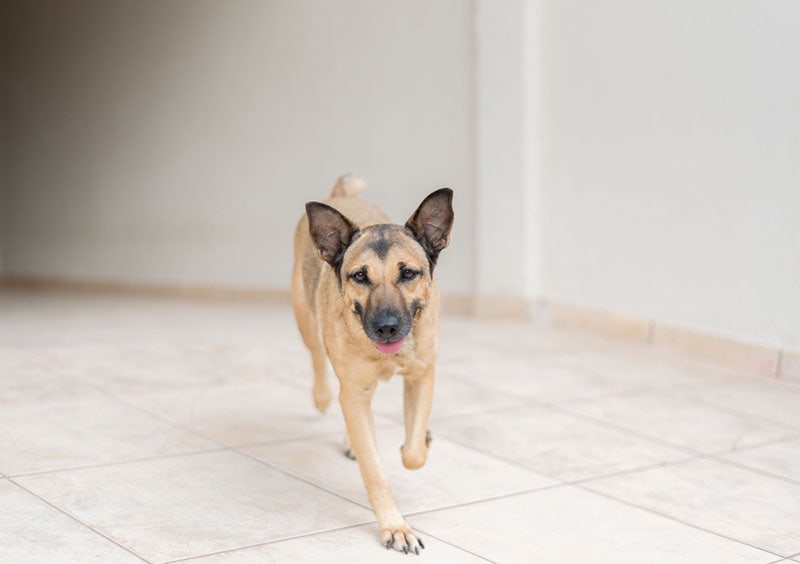
Shelter from the Elements
Your garage can also serve as a cozy retreat from the harshness of extreme weather. Leaving a pet outside in severe cold or heat can lead to serious health complications such as frostbite or heatstroke. A garage provides a temperate environment for your pet, especially when it’s properly insulated and ventilated, which is a must.
Limiting External Stimuli
A garage can also limit distractions that may cause anxiety or excitement for your dog. If your dog is the type to bark at every passerby or squirrel, the garage can offer a more visually muted space, thus creating a calmer environment.

Gradual Transition to the Garage
Just like humans, dogs need time to adjust to new environments. Suddenly leaving your dog in the garage for a full day could lead to anxiety and destructive behaviors. Instead, start by setting up a designated space in the garage for your pet. You could even put up some barriers initially to limit their space until they get used to the new environment.
Spending quality time with your pet in the garage will reinforce good behavior. Treats can also be used as positive reinforcement to make the garage a positive space for your pet.
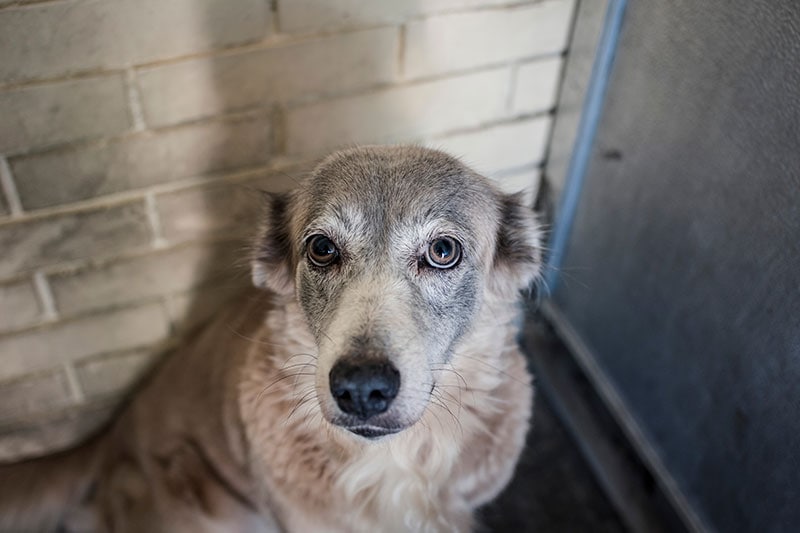
Maintaining an Ideal Garage Environment
A comfortable garage environment is vital for the well-being of your pet. A well-insulated and weathertight garage is the best option to ensure your pet is safe from both the cold winter temperatures and the sweltering summer heat.
Make sure to monitor the humidity levels in your garage, especially in the winter. High humidity can be uncomfortable and unhealthy for your pet. The use of a dehumidifier might be required if the humidity levels exceed 50%.
Feeding and Hydration
Feeding your pet in the garage should not change their eating habits. Be sure to provide clean, fresh water always, and use stable bowls that can’t easily be knocked over.

Comfort and Entertainment
Keeping your pet comfortable and entertained in the garage is critical. Provide a cozy bed that insulates them from the cold concrete floor and has a variety of toys available to keep them busy.
Items like an old t-shirt with your scent can provide comfort and familiarity. Leaving a radio on at a low volume can also offer a calming background noise.
Safety Precautions
Ensuring the garage is a safe space for your pet is crucial. This involves removing any objects or substances that could pose a risk. All hazardous materials should be stored in a locked cabinet.
Make sure there are no loose cords or ropes that your pet could get entangled in. If there are large objects like vehicles in the garage, consider covering them up to avoid any potential damage.
The Importance of an Insulated Garage Door
An insulated garage door is essential for maintaining a suitable temperature in the garage, making it a safe space for your pet. If your garage door is not insulated, it may be worth considering an upgrade.

The 3 Tips for Keeping Your Pet Healthy and Safe
Aside from proper boarding care while you’re away from home, there are also some basic guidelines to adhere to ensure you’re giving your furry friend the best life possible. Take a moment to examine these tips, and don’t hesitate to speak with your vet for more care advice.
1. Regular Exercise
While the garage can provide a safe space for your pet, it’s important to ensure they still get regular exercise. Taking your dog for a walk before you leave for work and when you return can help them burn off energy and reduce any potential boredom or anxiety.
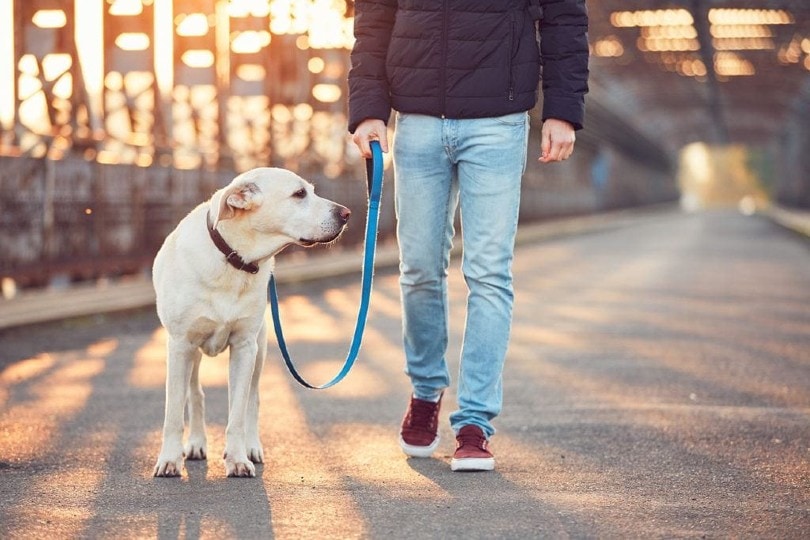
2. Monitor Their Behavior
If you notice any changes in your pet’s behavior after transitioning them to the garage, it’s important to address the issue immediately. Changes in eating habits, energy levels, or signs of distress could indicate that they are not comfortable with the new arrangement.
3. Regular Vet Visits
Routine check-ups with your vet can help ensure your pet remains healthy and identify any potential issues early.
If you need to speak with a vet but can't get to one, head over to PangoVet. It's our online service where you can talk to a vet online and get the advice you need for your dog — all at an affordable price!


In Conclusion
While leaving your dog in the garage while at work is feasible, it requires careful planning and preparation. By creating a comfortable, safe, and stimulating environment, you can ensure your pet remains happy and healthy in your absence. And always remember that regular exercise, constant monitoring, and vet visits are crucial to maintaining their well-being.
Whether your garage is the perfect pet haven or still needs some improvements, the effort you invest in making it a safe space for your furry friend will certainly be appreciated by your loyal companion.
Featured Image Credit: Robert MacMillan, Shutterstock
